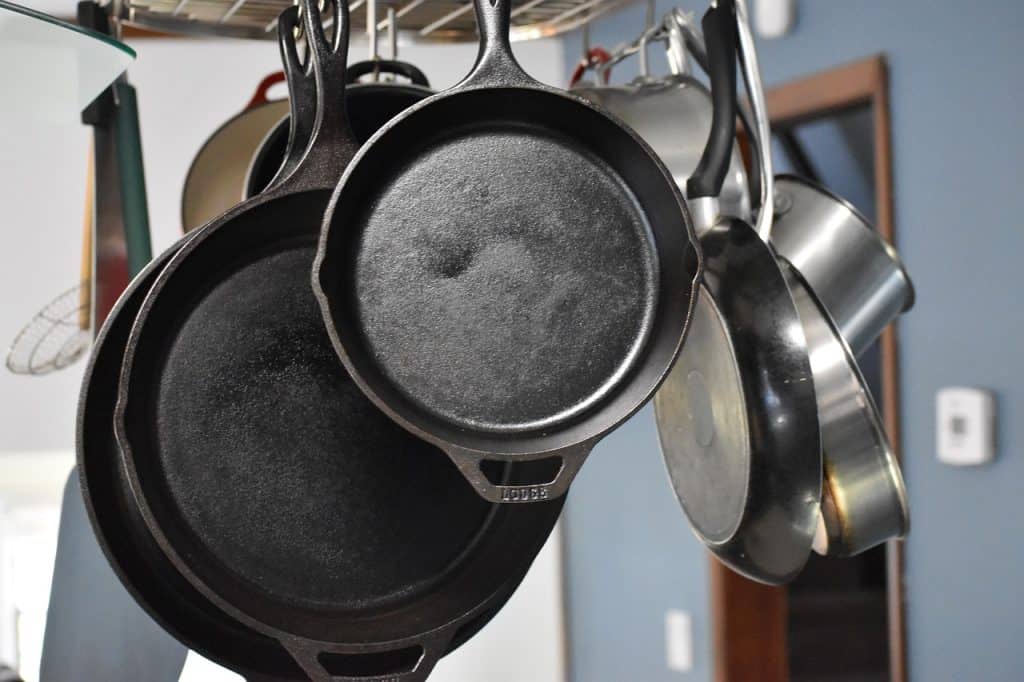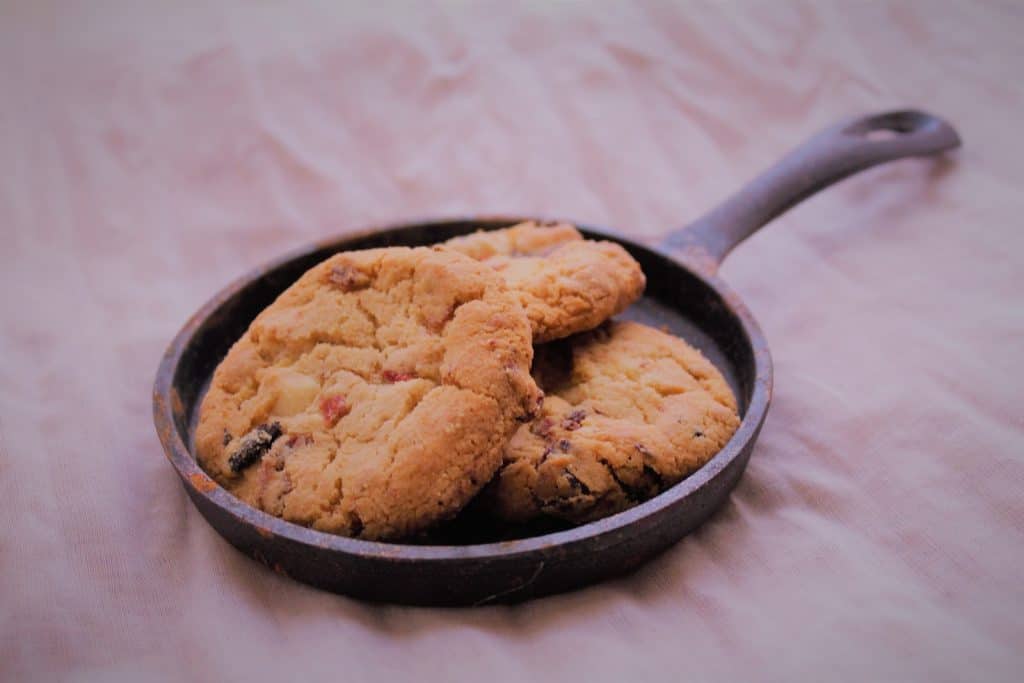When it comes to cast iron cookware, there’s no denying its superiority in the kitchen. Whether you’re searing a steak or baking cornbread, a cast iron skillet provides an unmatched, evenly distributed heat. But a common question is, ‘How to clean a cast iron skillet?‘ Well, it’s a task that can be tackled easily once you know a few simple techniques.
Here’s the good news: you don’t need to dread cleaning up after cooking with cast iron. It’s not as daunting as it might seem, and with the right know-how, your cast iron pan, skillet, or pot will continue to improve with each use. Plus, it’s essential to understand just how crucial proper cleaning is; it not only maintains the quality of your cast iron pans, but also ensures they last for decades.
Your cast iron skillet is unique, and every individual piece—whether it’s a new cast iron pan or rescued rusty cast iron—requires a different approach. Some might need a good scrub with hot water, while others could require the gentle abrasions of kosher salt or baking soda. So, let’s delve into different ways of how you can ideally clean your cast iron cookware.
Why Your Cast Iron Skillet Needs Special Care

The cast iron skillet is not your typical pan. It’s exceptional and deserving of a little extra attention. But you’re probably wondering, why does my cast iron skillet need special care?
Let’s break it down. With typical pots and pans, you could use any soapy water to remove leftovers. Yet when it’s about how to clean a cast iron skillet, the story’s quite different.
Your cast iron cookware, whether it’s a simple cast iron pan or a diverse range of cast iron pans and pots, is a kitchen workhorse. It’s incredibly versatile and can handle anything from searing a steak to baking a cake. But its cleaning process isn’t as versatile.
Unlike other cookware materials like stainless steel, cast iron behaves almost like a living organism. It has a cooking surface that changes and reacts to what you cook and how you care for it. The nonstick surface of a well-seasoned cast iron can rival the best nonstick pans out there. But if neglected, it’ll deteriorate and may turn rusty.
What makes cast iron behave this way? It’s all because of seasoning. The seasoning on your cast iron skillet is a built-up layer of polymerized, or chemically transformed, oil that provides a sleek, nonstick surface.
So, how does one keep their cast iron pan in top shape? Follow these steps:
- Avoid using too much soap or a stiff brush for cleaning. Soap breaks down the nonstick seasoning on your skillet. If it requires more than a gentle scrub with hot water, opt for some kosher salt instead.
- Avoid soaking the pan in water. Whenever possible, clean your cast iron skillet immediately after cooking to prevent rust.
- Dry your skillet thoroughly after every wash to avoid rust formation. Paper towel or low heat on the stove can be used for this.
- Ensure you oil the skillet after each cleaning and heating. A thin coating of vegetable oil or flaxseed oil will do the trick.
Take note, maintaining your cast iron cookware does demand a bit more attention than your regular pan. Yet nothing remains too challenging when you learn how to clean a cast iron skillet properly. Trust us; it’s worth the effort. Your reward will be a pan that offers excellent heat distribution, a naturally nonstick surface, and the ability to cook just about anything. Your dutifully cared for cast iron will thank you by delivering mouthwatering meals, again, and again.
Necessary Tools for Cleaning a Cast Iron Skillet

When it comes to cleaning your cast iron skillet, it’s not as difficult as you might think. With the right tools and a little bit of knowledge, you’ll be able to maintain it in top shape for years to come. So, what are the necessary tools for cleaning a cast iron skillet?
- Dish Soap and Warm Water: First and foremost, you’ll need some mild dish soap and warm water. Contrary to popular belief, a little soap won’t damage your pan. However, too much of it can strip the pan’s seasoning, so use it sparingly.
- Non-Abrasive Sponge or Stiff Brush: Next, you’ll need a non-abrasive sponge or stiff brush to clean your cast iron skillet. When you’re dealing with stuck-on food bits, it’s important not to resort to metal utensils that could damage the pan’s surface.
- Steel Wool: For tougher, stuck-on bits, steel wool will be your best friend. Remember, though, only resort to this for very stubborn leftovers, as it can also potentially damage your pan.
- Paper Towels: Paper towels are great for soaking up and wiping away excess oil. They’ll come in particularly handy when you’re re-seasoning your skillet.
- Vegetable or Flaxseed Oil: When you’ve finished cleaning your cast iron skillet, you’ll want to re-season it. This involves applying a thin layer of vegetable or flaxseed oil. Remember, too much oil can result in a gummy pan, so a little goes a long way.
- Oven: Lastly, the oven is your final tool for maintaining your cast iron skillet. After applying your oil, place the skillet upside down in a hot oven for an hour. This process helps to create and maintain a nonstick surface.
Remember, properly cleaning and maintaining your cast iron skillet will prevent rust and ensure it’s ready for just about anything you want to cook. With a little regular cleaning and care, your skillet will serve you well for many years to come. Happy cooking!
Step-By-Step Guide: How to Clean a Cast Iron Skillet

Have you been wondering how to clean a cast iron skillet without damaging its cherished, nonstick surface? Fear not; let’s dive into the simple, foolproof steps that’ll breathe new life into your trusty cast iron skillet.
First off, don’t let your cast iron pan cool down after cooking. While it’s still warm, rinse that cast iron cookware under hot water and wipe it with a paper towel to remove excess food chunks. Stay clear of using dish soap or steel wool, as these can strip the cast iron of its seasoning.
Next, you’ve got to tackle any remaining stuck-on bits. Sprinkle a generous amount of kosher salt onto your cast iron pan, and scrub it with a paper towel. The abrasive nature of the salt helps dislodge stubborn morsels without damaging the pan’s surface. If salt doesn’t do the trick, baking soda is another safe but potent alternative. But beware, you should only use it sparingly to avoid de-seasoning your pan.
For a super sticky or rusty cast iron, make a gentle paste of warm water and a little dish soap. Then, using a non-abrasive sponge or stiff brush, gently scrub the problem areas—no elbow grease required here!
Once you’ve dealt with the food remnants, rinse off your cleansed cast iron under warm water. Be sure to check all corners and scrub away any leftover vinegar or baking soda residuals.
Now comes an essential step: drying your cast iron skillet. Don’t let your cast iron pan air-dry, as lingering water droplets could invite rust, transforming your once shiny pan into a dull, rusty one. Instead, dry the skillet completely using a cloth or a paper towel.
After the pan is fully dry, it’s time to apply a thin layer of vegetable oil. Heat the oiled skillet on low heat for about five minutes, or until it’s smoking hot.
Now let your newly cleaned and oiled pan cool completely. Then store it in a dry area, ready for its next culinary adventure. Remember regular cleaning and proper maintenance of your cast iron cookware keeps it in top shape and ready to whip up just about anything your heart desires.
Final Thoughts
A cast iron skillet is an invaluable asset in every kitchen due to its superior heat distribution and versatility. However, it demands special care and maintenance to prevent rust and deterioration. Using proper methods and tools for cleaning, such as hot water, kosher salt, minimal soap, a non-abrasive sponge, and vegetable oil, can guarantee longevity and optimum performance.
Regular and proper cleaning also ensures the maintenance of the seasoning, providing a naturally nonstick surface. With a bit of effort, attention, and adherence to the detailed steps provided in this article, your cast iron skillet will remain a durable, reliable, and high-performing kitchen workhorse for years to come.
Other suggested articles:

